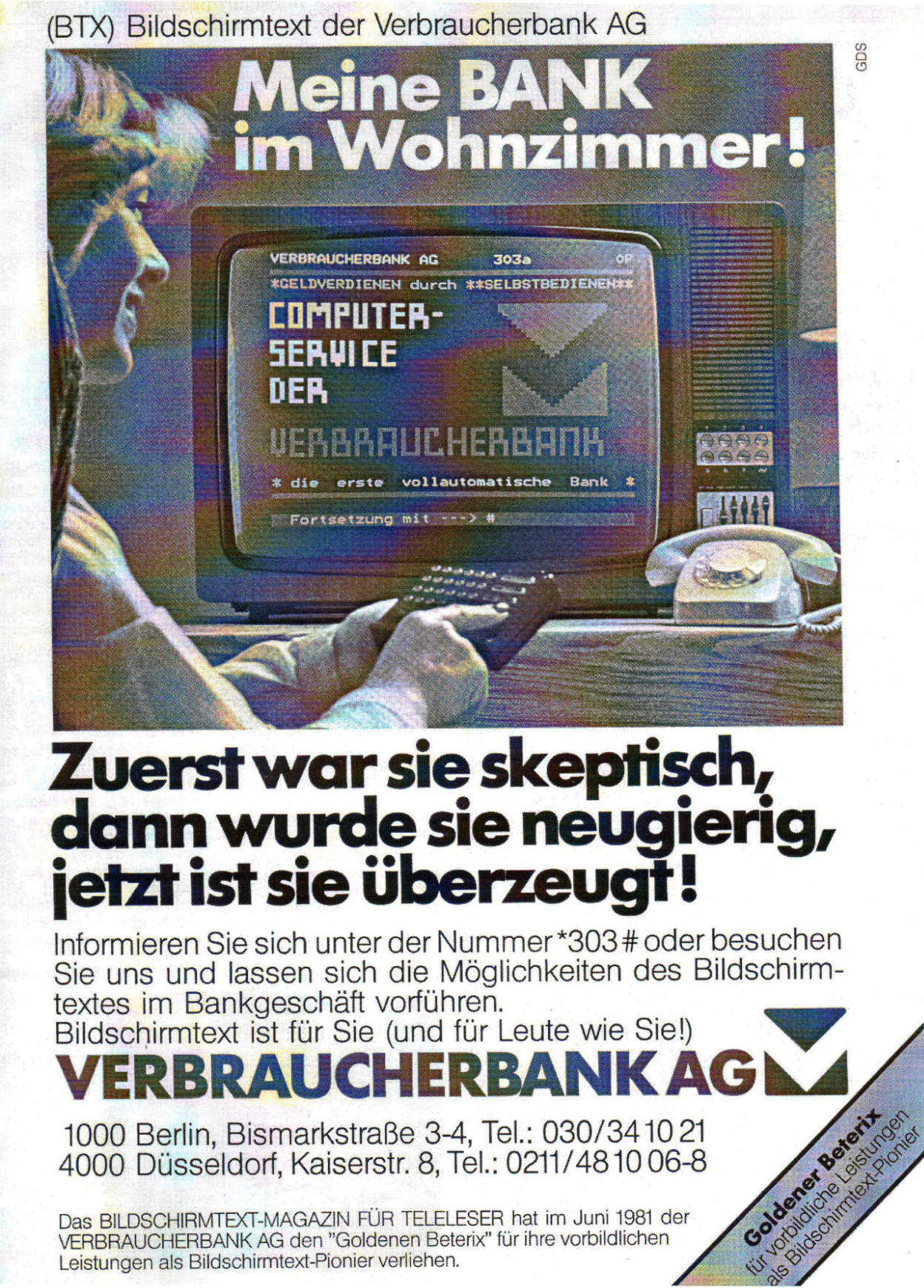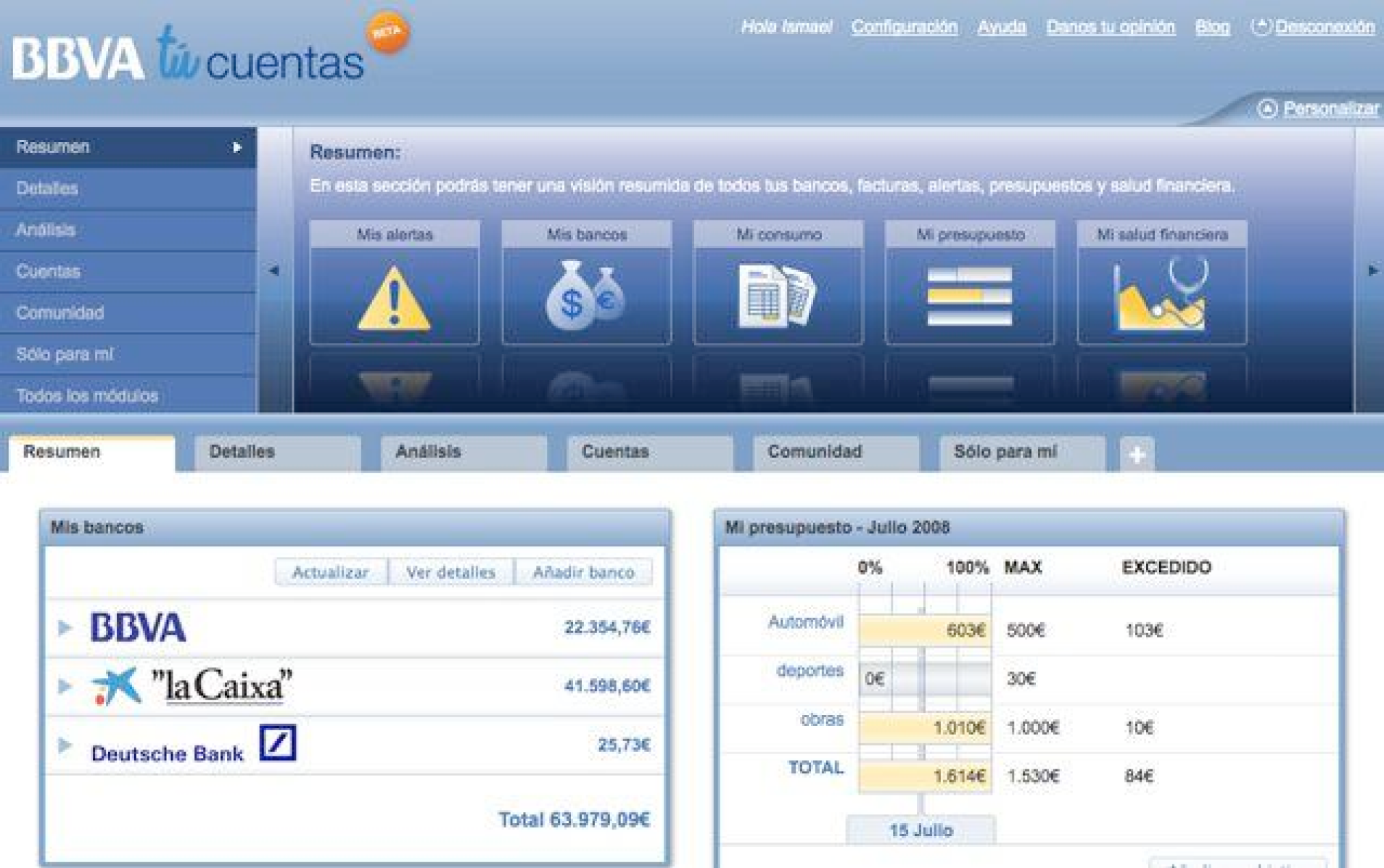From open banking to open data economies
Foreword
by Daniel Kjellén Tink CEO

Tink’s mission is to power this new world of finance; to enable financial service providers to evolve and continue meeting customer expectations.
Executive summary
Entering a new era of financial services


A brief history on open banking in Europe
Google Trends on ‘open banking’
Figure 1 Source: Google Trends, Search term ‘open banking’, Worldwide, Jul 1,2015 - Jan 1,2021
Advertisement by Verbraucherbank for the BTX service known as ‘My bank in the living room’ from the 1981

Source: Heise Online, ‘Vor 30 Jahren: Online-Banking startet in Deutschland’, November 2010
Screenshot of the multi-banking solution BBVA tú cuentas (2008)

Source: Forrester, ‘Case Study: BBVA’s Tú Cuentas Shows What Next-Generation Online Banking Will Look Like’, July 2008
Regulating access to payment accounts
SCA – strong customer authentication
PSD2 is complemented by a set of delegated regulations drafted by the European Banking Authority (EBA), known as the Regulatory Technical Standards (RTS). There's one delegated regulation for strong customer authentication (SCA) and common and secure open standards of communication (CSC), which was enforced on 14 September 2019. Despite the name, the RTS for SCA and CSC, is neither a standard nor technical. This regulation specifies when and where banks need to apply SCA and gives banks operating in the EU the option to provide a dedicated interface – typically an application programming interface (API) – to give TPPs secure access payment account information and initiative payments on behalf of a customer. These dedicated interfaces are typically referred to in the industry as PSD2 APIs.PSD2 regulates access to payment accounts for authorised account information services providers (AISPs) and payment initiation service providers (PISPs).
A growing number of TPPs
Figure 2 Source: Konsentus, Q4 2021 Third Party Provider Open Banking Tracker, January 2022

A growing open banking ecosystem
The four TPP types
Figure 3 Source: Tink, 2022
Data intermediaries
These TPPs have built a business connecting to banks to access financial data and transfer this data to businesses so that it can be used for a requested service. Some data intermediaries hoard data in order to generate competitive market insights, others categorise and enrich the data so that its customers can use it to build services or improve their processes.Vertical specialists
The financial industry is crowded with service providers who are each specialists in very specific disciplines. Over the last few years, there’s been a strong uptake of open banking services by such service providers to enhance existing solutions used for customer due diligence (CDD). Such as creditworthiness assessment, fraud detection, digital identity verification, and much more. These vertical specialists typically provide solutions to allow financial institutions to enhance their existing services.Industry innovators
Although all TPPs are innovating within their own respective fields, industry innovators are the businesses that are transforming how we look at data and financial services. Industry innovators use open banking to fundamentally change how we engage with those industries. For instance, through carbon footprint calculations, the role of a retail bank is suddenly being extended into that of a lifestyle coach. Through open banking-enabled loyalty schemes, manufacturers could build a community that transcends retailers. With personal finance management (PFM), utility providers can help households identify opportunities for cost savings.Payment solutions providers
A new generation of payment institutions is leveraging the technologies that have been unlocked by open banking. These TPPs are using open banking to build a framework for interbank account-to-account (A2A) payment services. Some rely solely on the functionality available through the PSD2 APIs for payment initiation. Others collaborate with banks to build joint solutions or propositions beyond the scope of PSD2. For instance, to enable users to initiate interbank payments that are exempted from SCA, or to enable instant payment where there are no such rails.From open banking to open finance
Distinguishing the movement, regulations and industry initiatives
Just like open banking, open finance often means different things to different people. This is where it gets confusing, but we'll try to untangle it for you. While regulators talk about open finance as a potential opportunity to unlock innovation and competition, industry participants talk about open finance as the next frontier for open banking – with untapped potential. Specifically, to some people open finance refers to an umbrella term that may capture all of the commercial opportunities outside the regulated scope. However, to most people in Europe, open finance describes the access to financial data and services that fall outside the scope of PSD2 and the UK Open Banking initiative. It refers to the opportunities for banks to provide premium APIs which would allow them to commercialise access to savings information, credit card information, investment information, and so on. Commercialising access to financial information beyond payments would give banks an opportunity to earn back their investments from their compliance efforts.Levels of data access in open banking, open finance, and open data
Figure 4 Source: Tink, 2022
Initiatives that go beyond PSD2

Berlin Group’s openFinance Framework
The Berlin Group is a payments interoperability standards initiative, focused on establishing open and common ground for technical and organisational requirements for the deployment of digital finance. Throughout 2022, their aim is to encourage banks to launch commercial APIs from their openFinance Framework, which will entail the extension of service capabilities that are not regulated by PSD2. These commercial APIs could include extensions to payments services, giving TPPs the ability to block funds, defer payments, offer pay-by-loan (with integrated consumer loans), set up SEPA Direct Debit Mandates, and more. They may also go beyond payment account information by unlocking access to savings, loan and securities information, enable electronic identity services, and even enable the TPPs to open current accounts or request a loan on behalf of the customer.The SEPA Account Access Scheme (SPAA)
The European Payment Council’s SEPA Account Access Scheme, or SPAA, covers the set of rules, practices and standards that will allow the exchange of payment accounts-related data. It builds on investments made in the context of PSD2 and is in line with EU legislation. SPAA considers the input from major European standardisation initiatives active in the field of PSD2 APIs, such as the Berlin Group. It is said to become a stepping-stone towards open finance beyond payments, and potentially provide a template for open data – beyond finance.Variable recurring payments (VRPs)
Although VRPs do not strictly qualify as open finance, they are often treated that way, because they fall outside of PSD2 and the CMA’s Open Banking initiative. VRPs were originally introduced by the Open Banking Implementation Entity (OBIE) in the UK, to allow payments to be initiated with an exempted or delegated SCA flow. This was introduced so the nine largest banks could allow customers to make automatic ‘sweeps’ between accounts in their name. However, the industry quickly realised that this technology would also allow PISPs to create competitive payment setups and would be willing to pay a premium for these capabilities. This would allow the banks to earn back their potential losses on overdrafts due to sweeping, and TPPs to launch ‘bank-on-file’ payment solutions that are similar to recurring card, card-on-file, and Direct Debit. If proven successful, VRPs could even start to replace a significant portion of existing e-commerce payment volumes. While the first small scale pilots are starting to take shape, it is likely that the wider market will be opened up by a large retailer or platform.Barclays: creating new revenue-generating propositions

Who he is:
Harcus Copper is Head of Integration and Information Services at Barclays Corporate and Investment Bank. He’s building a new generation of services by building on the open banking efforts of the retail bank.What he’s known for:
With over 27 years' experience in corporate banking, Harcus has developed his career across multiple disciplines. During his 32 years with Barclays he has seen the industry change first hand.Why we spoke to him:
Harcus has led the first forms of information exchange at Barclays by building and launching SWIFT Corporate Access, managing their Host-to-host solution and developing a direct to client API proposition. Now he’s taking his wealth of experience into the open banking world.How did Barclays start its journey towards Premium APIs?
‘The biggest opportunity for Barclays is to become more than a bank: to become a technology provider to all of our corporate customers – regardless of their respective industries.’

What do you consider the biggest opportunity?
The Barclays project team for commercial open banking was assembled during 2021, and so far, we’ve been primarily investigating how we can bring our compliant APIs for Account Information Services (AIS) and Payment Initiation Services (PIS) into the corporate banking world. Let’s not forget that it’s still early days for the entire open banking industry movement. We’ve now laid down the foundation from an infrastructure perspective – thanks to the efforts of the CMA – but we haven’t even scratched the surface of the broader opportunity. Open banking has two sides. On the one hand, it’s about users consenting to the access of information. For example, as a financial controller at a utilities firm, I may want to aggregate my financial data across banks and geographies to improve reconciliation cycles, quarterly reporting, or financial planning. On the other hand, it’s about externalising APIs that may help our corporate customers gain better access to our financial services and interact with their own customers in automated ways. This can be in the form of payments, which is currently regulated as payment initiation under PSD2. But it can also allow corporate customers to easily spin up a virtual IBAN account, exchange currencies, or request a loan. I believe the biggest opportunity for Barclays is to become more than a bank: to become a technology provider to all of our corporate customers – regardless of their respective industries.How do you build the business case for your open banking projects?
We have a reasonable idea of where we want to be with our API catalogue over the next couple of years. A good analogy is the launch of our current host-to-host for payment initiation nearly 10 years ago. This is where files of payments are automatically instructed from a Corporate’s ERP or TMS application in a fully integrated way without having to repeat processes and authentication steps via the Bank’s online channel. When we built this, our business case stated that it would be successful if we would onboard a small number of large multinational corporate clients – today we have far exceeded those expectations with clients of all sizes and complexities connected. The point is, like any business, we may not have an immediate business case to realise value for all of the services on the roadmap. We have an estimate of how fast the market is moving, and we potentially risk falling behind if we don’t keep moving the open banking proposition forward. Our corporate customers will be expecting that their bank can connect to the services that they need to manage their business in an ever more integrated, automated and value adding way.State of open finance around the world
The global open finance maturity index
Figure 5 Note: In order to illustrate open finance maturity at a generalised geographic level, we developed the global open finance index. This model shows how countries compare according to market demand, where 1 means no demand, no TPPs, no competition and 5 means high demand, many TPPs, highly competitive. Regulatory support shows the level of regulation, where 1 = unregulated, 2 = general data regulation, 3 = payment data regulations, 4 = financial data regulations, and 5 = open data regulations.
Factors driving open finance maturity

How different regions are adopting open finance
Western Europe (WE) is leading by example but continues to face obstacles
The WE region sees mixed levels of market adoption and regulatory support for open banking and open finance. By the end of 2021, the EBA had still not been able to uniformly enforce the RTS across the EU. The UK's FCA is making changes to the RTS in order to give TPPs more room to innovate, and the EBA has proposed similar changes. The biggest challenge for open banking adoption remains the quality of PSD2 APIs across the region. This is mainly due to the obstacles in the user interface that continue to inhibit adoption of open banking by consumers and businesses. Sweden and the UK stand out for their ecosystem potential and regulatory support as they count the highest number of authorised TPPs. They are witnessing the first signs of scaled adoption with millions of citizens using the services every day.Supporting the market adoption with regulations in North America (NA) and Latin America (LATAM)
The NA and LATAM regions are experiencing a strong pull from the market. With a large underbanked population, consumers and businesses are looking for opportunities to improve their financial situation through the services that TPPs are taking to market. Many TPPs have emerged that are accessing bank information through the customer interface. Regulators in the United States and Canada are contemplating rules for open banking and open finance, and Mexico is expected to publish provisions for open finance this year. The regulators in Brazil have advanced the most and aim to support open finance.
Regulator is either the driver or the inhibitor in Asia, Pacific and Japan (APACJ)
The APACJ region is a mixed bag at different ends of the spectrum. So far, the Australian Consumer Data Right (CDR) has not accelerated open banking adoption and has even stalled progress for some TPPs. In contrast, open banking has been so successful in countries such as Hong Kong, India and Singapore that smaller TPPs are now struggling to challenge the dominant position of the incumbent TPPs.The Middle East, North Africa and Turkey (MENAT) will wait to see which way the wind blows
The MENAT region has condemned businesses directly accessing the customer interface in order to retrieve information. This has slowed down innovation as TPPs become dependent on banks to make their customers' data available. Various data intermediaries have emerged to work with banks to expose APIs, but there are few use cases to show. Turkey has issued regulations to align with the EU’s PSD2 and will be looking to the establishment of both AISPs and PISPs. The United Arab Emirates also aims to align with PSD2, but is hoping the market will lead the development of APIs.Nordea: leading towards the platformisation of financial services

Who he is:
Gunnar Berger is Nordea’s Head of Open Banking. He’s building a technical platform for handling open APIs in Nordea as well as for establishing processes for handling external developers and for driving co-creation activities with TPPs.What he’s known for:
Driving the transformation inside-out. Gunnar is delivering solutions that are changing the traditional way financial services are offered and consumed.Why we spoke to him:
Gunnar has a vision that goes beyond PSD2, and ensured that Nordea was the first bank in the Nordics to launch an open banking strategy.How has Nordea approached the open banking movement?
‘I am convinced that when you introduce new technologies, they will be used to replace old systems, processes and habits.’
Is embedded finance and banking-as-a-service part of your open banking strategy?
Absolutely! The industry sometimes talks about open banking as if it’s restricted to PSD2 or other regulations. It’s not. At Nordea, we’ve always said that our open banking strategy encompasses many of the modular banking business models. One of the smart things we did – working with both compliance budgets and commercial budgets – was that whatever we would build for PSD2, we could also commercialise for corporate customers. I see a lot of banks have outsourced the heavy lifting for PSD2. But if they ever want to commercialise their APIs and benefit from the opportunities for open banking and open finance, they’d need to start all over again.Did you need to modernise your IT landscape?
Not really. We embrace the complexity. People forget that Nordea is the product of a series of mergers and acquisitions between Finnish, Swedish, Danish, and Norwegian banks. These mergers and acquisitions have created a complicated network of systems, and so we need to build on top of that. We have basically created a shell of APIs around the core. So now people don’t have to care about the underlying systems and need only to focus on the service.Looking into the future, what do you see?
My long-term vision is the platformisation of financial services. At Nordea, we have everything in place to go there today. I am convinced that when you introduce new technologies, they will be used to replace old systems, processes and habits. Even if we don’t know how or by whom some of our innovations will be used, I believe developers will find a creative application for it.The API platform we’ve built is a slick piece of technology compared to the old junk that banks have been working with. We don’t yet know all the ways it will be used, but it’s the foundation for a new generation of financial services.Embedded finance and the future of banking
From embedded finance to open data economies
From a customer perspective, this implies that financial products are increasingly delivered contextualised, at the point of need. Embedded finance propositions often leverage open banking (and, in the future, open finance) API infrastructure to streamline specific parts of the product experience, like identity and affordability checks. But for embedded finance to truly work, banks may also need access to information held by the non-financial institutions. This is where true open data economies are formed, as the exchange of data and services starts to transcend that of the financial services industry.BCG: building capabilities and infrastructure for the future

Who he is:
Kunal Jhanji is a core member of Boston Consulting Group’s (BCG) Financial Institutions practice. He leads BCG's payments work in the UK and is a member of the firm’s Transaction Banking and Payments management team.What he’s known for:
Kunal developed BCG's global open banking proposition and has helped several large European banks deploy innovative partnership strategies.Why we spoke to him:
He understands the challenges and opportunities related to open banking. He’s big on helping financial institutions leverage open banking APIs in order to optimise their core banking propositions.What are some of the areas that still have untapped potential?
‘Banks need to invest in today’s market opportunities that will reap a value in 5-6 years.’
How do you see banking-as-a-service creating value?
At BCG, we would say banking-as-a-service, or BaaS, propositions can be defined across four dimensions: Product, which describes the problem being solved, such as payments acceptance or lending.Service, which describes the key to delivering the solution. Delivery, which depends on the licence arrangement. And segment, which describes the target audience for the offering. We believe BaaS is an immediate opportunity that financial institutions should pursue. According to our calculations the BaaS market represents close to $6 billion in spending in Europe and approximately $2.5 billion in the UK. I think the true power of BaaS is only unveiled once banks and merchants come together – when banks enable non-banks to offer core banking solutions. This is what we often call ‘embedded finance’, and it's changing the industries around us. For instance, buy-now-pay-later (BNPL) is a great example that’s merging the product and service – where the simple product (zero-interest credit) becomes invisible to the customer, and it’s all about the experience of buying a product. So far, the BaaS opportunity has primarily been addressed by niche players. Traditional banks have capability to create compelling offerings but only if they are able to direct their value propositions in the right direction.What do you see as some of the main challenges for open banking?
There are many challenges that cannot be overlooked if banks are pursuing a holistic open banking strategy. One thing is imperative, the bulk of investments need to help build capabilities and infrastructure for the future. The investment that banks have made on the infrastructure side have been important, but many continue to lack the capabilities that allow for real-time decisioning. They need to think about the go-to-market strategy as a combination of infrastructure, capabilities, and product.If you look at the fintechs in the card-issuing space – the challenger banks and neo banks of the world – many have leap-frogged banks in the way they enable real-time issuing of the cards. The onboarding, customer due diligence, and origination of services happen in a matter of seconds or minutes, instead of days or even weeks. We believe there are many building blocks available in the market, but the challenge is bringing these components together in a way that is coherent and allows banks to keep up with the digital-native banks in the market. We are finally seeing some banks waking up to the challenge. They understand that infrastructure is patchy, the quality of their APIs is patchy, and their services are often patchy too. There have been huge investments in the market, and some markets are moving faster than others. We believe we’ll see the strongest growth and pace of innovation in areas such as payments, lending, and FX-aaS*. Banks need to invest in today’s market opportunities that will reap a value in 5-6 years.Unlocking open data economies
1. Customers must give explicit consent
Going back to the original rules under data protection, the processing of personal information can only happen with explicit consent of the customer. This consent is not only needed for the processing of information, but also for the access and retrieval of information. Explicit consent is a fundamental principle to data privacy and stands at the core of the exchange of data and services to create value for a customer.2. Third party providers must identify themselves
Regardless of the information that TPPs are accessing, when the business does not identify itself, the data holder may suspect the TPP is impersonating the customer. Identification is important as it would allow a data holder to verify that the party that is accessing information is a legitimate business that is providing a genuine service to a mutual customer.3. All information and communication must be secured
Whether information is transferred to or from the data holder, it is important that any communication is encrypted and secured so that it can only be read by the authorised parties. This lowers the risk of a data breach and ensures it cannot be processed by unauthorised parties.4. Liability is with the party where security was breached
In an open data economy, where information is moving between parties who may or may not have contractual relationships with one another, it needs to be clear who is liable when information is breached by an unauthorised party. The basic principle for an open data economy should be that the party that fell short on its security responsibility is liable for any damages inflicted on the customer. These basic principles are important to avoid limiting how and what kind of access technologies we use. This means TPPs can innovate around the changing customer interface, whether it’s virtual reality, voice, or connected devices. This allows market-driven demand for effective and secure ways of information exchange, without data holders being required to make investments in technologies that may never see traction.Programmes and data elements unlocked through open data economies
Figure 6 Note: List of information elements is not exhaustive or mutually exclusive Source: Tink, 2022
Concluding remarks

Getting ready for open data economies
1. Becoming a software company
Open banking isn’t the compliance burden many thought: it’s been an eye-opener, and is changing the world around us. Today’s technologies allow financial institutions to take on a different role in the way they interface with customers and the ecosystem: the role of technology providers. The move towards banking-as-a-service and embedded finance requires financial institutions to deliver technology solutions that developers can easily integrate to create improved processes and services. Accepting this fact is the first step towards embracing open finance and open economies. However, operating as a technology company goes beyond the way a bank organises its teams, or the channels through which it communicates with its customers. It’s about identifying and building new relationships and revenue streams that diversify the business. It’s about recognising that a bank’s trust should not be taken for granted, and that it can play a key role in the access to data across industries.2. Thinking big but starting small
It’s easy to start daydreaming about all the value-added services that can be created through the access of industry data. However, the first challenge for financial institutions remains the same: compliance and realising the value of open banking.Banks have a wide range of options when it comes to their open banking tactics. They can choose to operate as a platform, inviting other TPPs to position services for their existing retail or business banking costumes. Banks can also decide to focus on externalising services to corporate clients by launching finance solutions to streamline financial planning, reconciliation, and access to credit. One area where open banking can generate real results is in enhancing existing banking operations. Using open banking technologies can help reduce risk and increase productivity, while improving the customer experience during the onboarding process. The exciting thing is that these small opportunities exist with every stage of the customer journey and can easily be realised using the technologies available today. For example, banks can use open banking to access a user’s full name to accelerate a simple due diligence flow, to access a user’s IBAN to quickly set up a Direct Debit Mandate for billing purposes, or to access transaction history to do real-time risk assessments. These are all incremental improvements to existing processes which can each lower costs and reduce fraud, while increasing conversion and improving the customer experience.3. Building with a partner with a compatible vision
Rome wasn’t built in a day. Some open banking, open finance, and open data economy use cases will require years of collaboration between banks, fintechs, and service providers who each play their part. Fintech partners can help provide proven open banking use cases and enable banks to quickly respond to the market. Ultimately, both banks and TPPs will need to recognise that they can only realise the next frontier of open banking by working together. Building with a partner with a compatible vision ensures that you are each working towards a similar goal.About this research
About Tink
